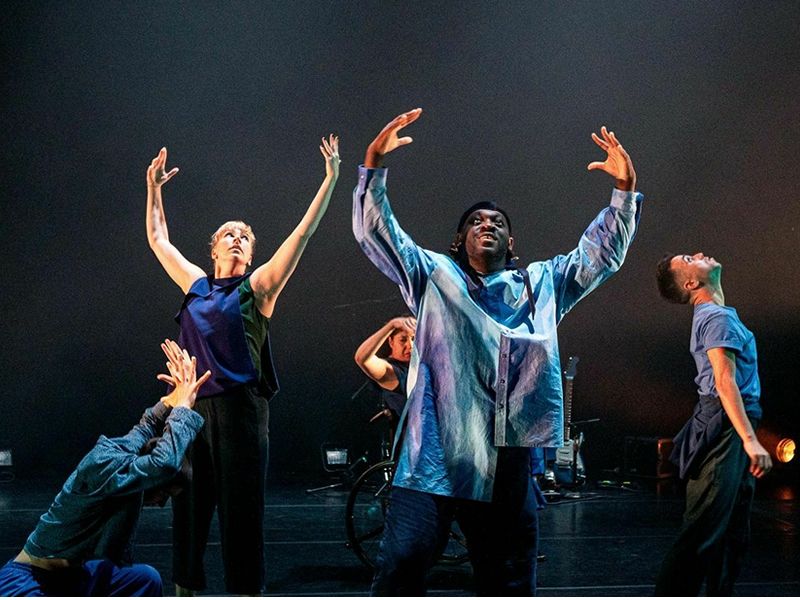
John Hawk Insunrated – Dance tells stories through rhythm and emotion. It transcends language and communicates feelings in ways words cannot. Through movement, dancers express emotions, experiences, and narratives. Every style, from ballet to hip hop, has its unique way of conveying messages. Dance captures the essence of human emotion and brings it to life. Whether on stage or in the streets, dance connects with audiences deeply. The rhythm of the music drives the movement, while the dancer’s emotions guide the story. In this article, we explore how dance becomes a powerful tool for storytelling.
Dance is a universal language. It allows people to express emotions and ideas without speaking. Every movement carries meaning and intention. Ballet, for example, tells stories of love, tragedy, and joy through elegant movements. Each gesture and step communicates complex emotions, allowing the audience to understand the story without words. Similarly, hip hop and contemporary dance express struggles, empowerment, and personal narratives through sharp, expressive movements. The rhythm of the music plays a crucial role in how the story is conveyed. In this way, dance becomes an emotional experience for both the performer and the audience.
“Read about: Embracing Minimalism: Tips for a Simpler Lifestyle”
Rhythm is the heartbeat of dance. It guides each movement and shapes the dancer’s performance. The tempo, beat, and timing influence how a story is told. A fast rhythm can convey excitement, urgency, or tension, while a slow rhythm expresses calm, sadness, or introspection. Dancers use the rhythm of the music to connect with their bodies and emotions. In ballet, dancers move with grace to classical compositions, while hip hop dancers use beats with strong, syncopated rhythms to tell powerful stories. The relationship between movement and rhythm allows the audience to feel the emotion behind the story being told.
Emotion is at the core of dance storytelling. The way dancers express their feelings through body language is what makes dance so captivating. Whether it’s the delicate movements of a ballerina or the powerful energy of a hip hop dancer, emotion is conveyed in every step. A dancer’s facial expressions, posture, and movements tell a story of joy, sorrow, anger, or love. The connection between the dancer’s body and emotions allows the audience to experience the story on a deeper level. Through emotion, dance creates a visceral connection between performer and viewer.
Different dance styles convey different emotions and stories. Ballet, with its precision and grace, often tells tales of fantasy or historical events. Dancers use controlled movements and strong technique to bring these stories to life. In contrast, hip hop tells stories of personal struggle, resilience, and empowerment. The raw, dynamic movements convey intensity, strength, and defiance. Contemporary dance blends elements of various styles, often focusing on personal emotions and social issues. Each dance style brings a unique flavor to storytelling, allowing dancers to communicate diverse experiences and ideas.
“Read more: Cardio Meets Strength Training: The Ultimate Workout Combo”
Dance also serves as a reflection of culture. Through its movements, dancers share stories rooted in their heritage, beliefs, and traditions. Traditional dances from various cultures tell stories of history, mythology, and identity. For instance, Indian classical dance forms like Bharatanatyam use intricate footwork, hand gestures, and facial expressions to tell ancient stories of gods and legends. Salsa and tango express passion and romance, deeply connected to Latin American culture. By embracing different styles, dancers keep their cultural stories alive and share them with the world.
The emotional connection between the dancer and the audience is vital to the storytelling process. A dancer’s ability to convey raw emotion allows the audience to experience the story on a personal level. The audience feels the excitement, tension, or sadness through the energy and expression of the performer. This connection makes the experience of watching dance so powerful. As the dancer expresses their emotions through movement, the audience is transported into the story, feeling what the dancer feels. The shared emotional experience bridges the gap between performer and observer.
For many, dance serves as a means of empowerment. Through movement, dancers can reclaim their narratives and express their individuality. Dance allows individuals to communicate their personal experiences and emotions in a safe, creative space. For many dancers, the act of performing becomes a form of self-expression and liberation. By sharing their stories through dance, they inspire others to find their voice. The strength and vulnerability shown in a dancer’s performance often resonate with those who watch, fostering a sense of connection and empowerment.
John Hawk Insunrated - Artists, workers, and students increasingly turn to creative practices for wellbeing to manage stress and protect…
John Hawk Insunrated - Many artists rely on personal sketchbook creative freedom to explore ideas safely without pressure or judgment.…
John Hawk Insunrated - Many professionals are experimenting with new skills to stay relevant, yet few truly analyze what works…
John Hawk Insunrated reports how the viral soft life nervous system content on TikTok mixes soothing visuals with mixed advice…
John Hawk Insunrated highlights standout DIY experiments from this year that blend fun, learning, and simple tools at home. Why…
John Hawk Insunrated highlights favorite DIY experiments this year that blend simple household items with impressive scientific and artistic results.…